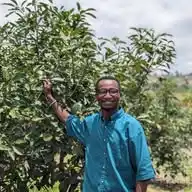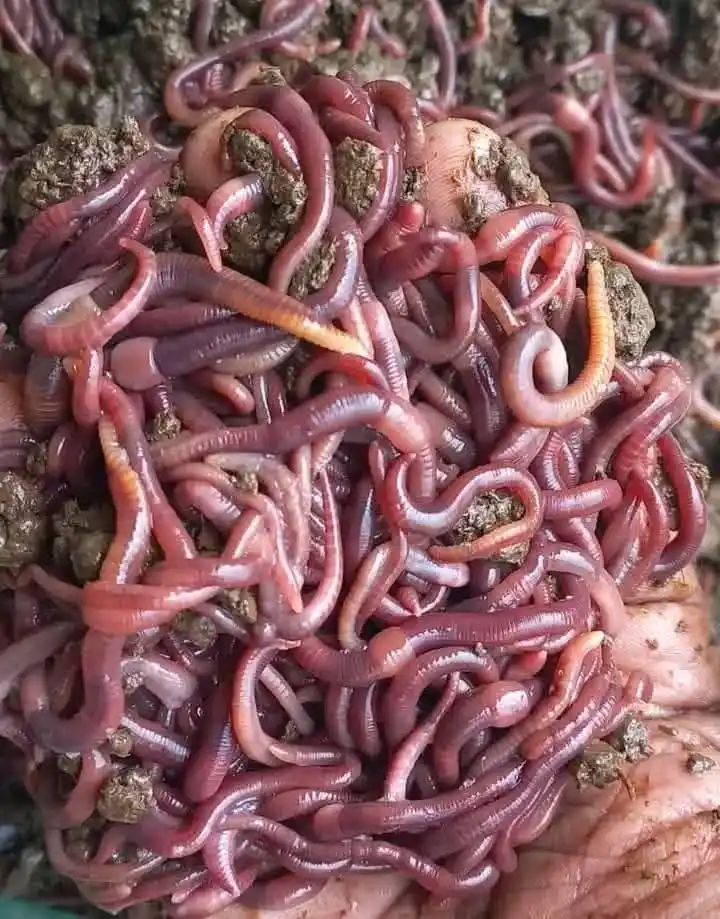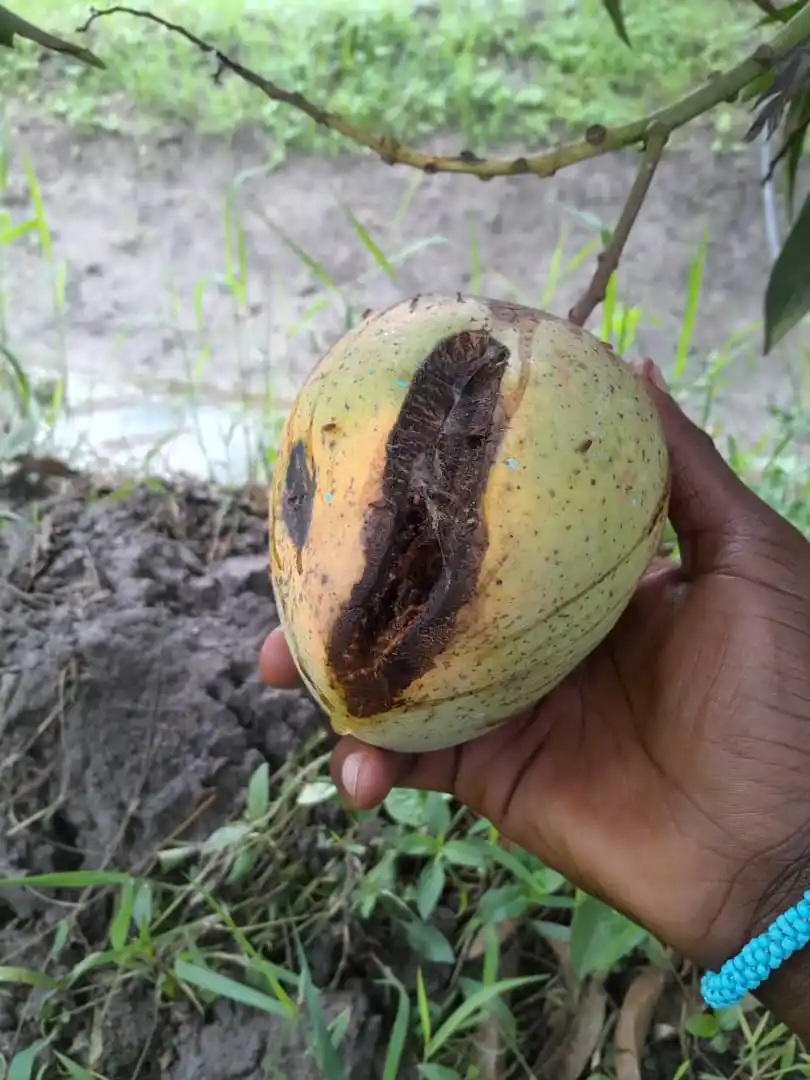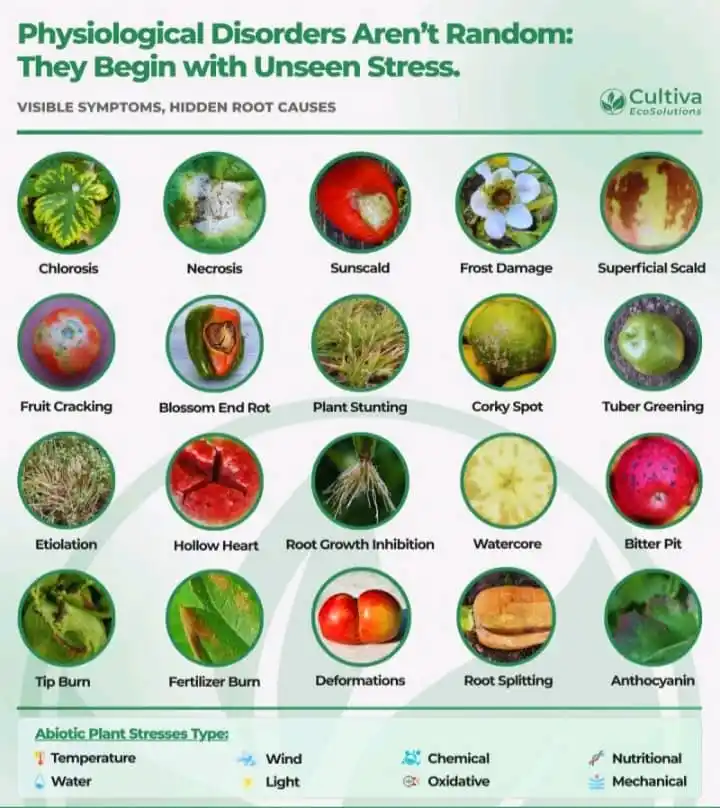
AGRONOMME🇷🇼
897 subscribers
About AGRONOMME🇷🇼
Field Technician/Agronomist by Profession || Communication Specialist!
Similar Channels
Swipe to see more
Posts

Earthworms Alot of people don't like to see this even some farmers but it's very important in soil fertility... These are Earthworms, they play a crucial role in improving soil fertility through several biological and physical processes. Here are the key roles they perform: 💥1. Soil Aeration As earthworms burrow through the soil, they create channels that allow air to penetrate the soil. This improves oxygen availability to plant roots and beneficial microorganisms. 💥2. Nutrient Recycling Earthworms consume organic matter and decompose it. The resulting castings (worm feces ) are rich in nutrients like nitrogen, phosphorus, potassium, calcium, and magnesium, which are readily available for plant uptake. 💥3. Improving Soil Structure The tunnels created by earthworms help in forming soil aggregates, which improve soil structure, porosity, and water-holding capacity. 💥4. Enhancing Microbial Activity Earthworm activity stimulates microbial populations in the soil, which further aid in the decomposition of organic matter and nutrient cycling. 💥5. Organic Matter Breakdown Earthworms help in breaking down crop residues and other organic materials, speeding up their decomposition and incorporation into the soil. 💥6. pH Regulation Their castings tend to have a neutral pH, which can help buffer acidic soils, making them more hospitable for plant growth. 💥7. Increased Plant Growth Studies show that earthworm presence often correlates with higher crop yields due to improved nutrient availability and soil conditions.


One day, I attended an agriculture pitching event at one of the top agriculture universities here in Rwanda. I was honestly amazed. Project after project, idea after idea — these young people weren’t just dreaming. They were innovating! From tech-enabled irrigation systems to organic bio-solutions and sustainable agro-enterprises — I could feel the power of transformation in every pitch. Not just for Rwanda, but for Africa. But then a question hit me hard: “If these ideas are this powerful, why aren’t they being implemented in the real world?” It felt unfair. With minds like these, shouldn’t we already have tech-driven farms, strong food systems, and empowered smallholder farmers by now? I brought this up with a friend who works in an agricultural institution. We both paused, looked at each other and said, “Eeeeeh...!” And you know what we realized? The ideas are there. The passion is there. But the funding is not. Youth have the energy. The innovation. The fresh perspective. But most of the time — their pockets are empty. That’s where investors, government, and agriculture stakeholders must come in. Not just to “support” youth but to believe in them enough to invest — and earn from their innovation. Because trust me, these young minds aren’t short on ideas. They’re just short on resources. And every day we let these ideas die in silence, we delay the transformation of our continent’s agriculture. So here’s my message today: Let’s fund these thinkers. Let’s give life to the ideas sitting in student notebooks. Let’s unlock agriculture’s future — one youth-led project at a time. Africa doesn’t lack innovators. It just needs bold believers who invest in them.


📑 Gastrointestinal (GI) Blockages in Goats & Sheep 🩺 Caused by Foreign Bodies! Goats & sheep, due to their curious nature, may ingest various objects that can lead to blockages in their digestive system. These foreign bodies often come through hay bales or feed from outside the farm, including a wide range of materials such as plastic, hay twine, plastic waste, and more. These blockages are serious medical conditions that require immediate veterinary attention. Here are some important points to consider: 📍Symptoms: The signs of gastrointestinal blockage in goats and sheep can vary depending on the location and severity of the obstruction. Common symptoms include loss of appetite, weight loss, cessation of stool production, abdominal pain, bloating, restlessness, and in severe cases, the animal may die before the condition is recognized. It’s important to identify the symptoms early, as it can sometimes be an emergency situation. 📌Diagnosis: A veterinarian will conduct a thorough physical examination and may perform additional tests (such as ultrasound or X-ray) to identify the blockage and determine the cause. 📍Treatment: The key to avoiding this issue is prevention. Regular monitoring and the removal of any unwanted objects or waste from the animals' environment can help reduce the risk. Additionally, ensure that the hay and feed provided are free from dangerous materials. 🩺Important Note: The information provided here is not a substitute for professional veterinary advice. Consult a veterinarian immediately if gastrointestinal blockage is suspected.


You’re Adding Calcium, But Your Fruits Still Suffer? Let’s Talk. Here’s the hard truth: Applying calcium doesn’t guarantee your fruits will get it. Many farmers pour in calcium, expecting firmer fruits, stronger shelf life, and better disease resistance — only to be disappointed. Why? Because it’s not just about how much calcium you apply, but how well your plant can absorb and deliver it where it’s needed — the fruit. Let’s break it down: 1. The Microbiome Comes First: Without an active soil microbiome, calcium stays locked in the soil, unavailable to plants. Microbes are the gatekeepers. 2. Soil Structure and Root Health Matter: Damaged or unhealthy roots can’t absorb nutrients efficiently. You need good root architecture and strong transpiration flow to move calcium upward. 3. pH and Ionic Balance Are Crucial: Too much potassium, magnesium, or ammonium in the soil? They’ll compete with calcium and block its uptake. Even with plenty of calcium in the soil, imbalance means zero delivery. 4. EC, Moisture & Consistency: Fluctuating moisture or poor electrical conductivity (EC) disrupts the nutrient highway. Calcium transport becomes slow or even blocked. So what’s the solution? Stop treating calcium like a magic spray. Start building a system — from microbiome health, to soil balance, to root integrity. Because calcium doesn’t move on its own. It moves only when every link in the chain is working. Calcium strategy isn’t about more. It’s about smarter.


Why Do Goats Cough? The Real Reasons You Shouldn’t Ignore 🐐 One day, I visited a smallholder farmer who looked really worried. “Brother,” he said, “my goat keeps coughing, and I don’t know what’s wrong. I gave it clean water and food... but it still coughs.” I smiled and told him, "You’re not alone. Many farmers ignore a goat’s cough thinking it’s just a normal reaction — but in most cases, it’s a warning sign." So let’s talk about it. 🥶 1. Pneumonia – The Silent Killer The most serious and common cause of coughing in goats is pneumonia. It can start as just a little cough, but in a matter of days, it can kill a goat if not treated. What causes it? Drastic changes in temperature — like warm days and cold nights Cold, wet, or drafty housing Overcrowding and stress Transport without proper care Weak immune system due to poor nutrition What to observe: Goat coughing persistently Heavy or labored breathing Fever Nasal discharge (mucus from the nose) Refusing to eat or looking dul 🩺 This is the time to call a vet immediately. Early treatment with antibiotics and good supportive care can save your goat’s life. 2. Dusty or Moldy Hay – The Unseen Enemy Not all coughing is caused by disease. Sometimes it’s simply environmental. If you're feeding your goats dusty, moldy, or poorly stored hay, the particles can irritate their respiratory system. They breathe it in, and the body responds by trying to push it out — so they cough. Also, bedding that hasn’t been changed regularly or stored in a damp place can become moldy or release ammonia, further irritating their lungs. What to do: Shake and inspect your hay before feeding Store hay in a dry, ventilated place Clean bedding regularly and ensure housing has proper airflow 🪱 3. Lungworms – The Hidden Culprit Another cause is internal parasites, specifically lungworms. These worms live in the lungs and slowly damage the respiratory system. The goat may look okay at first but will develop a chronic dry cough. You may notice: Regular coughing even when there’s no dust Poor weight gain Weakness over time Solution: Fecal tests from a vet and a proper deworming plan. Not all dewormers treat lungworms, so seek the right one. 🚬 4. Environmental Irritants – The Neglected Factor Ever sprayed strong disinfectant near your goats and they started sneezing or coughing? That’s not a coincidence. Smoke (from burning near the farm), chemicals, or strong smells can cause temporary coughing — and if prolonged, can damage their lungs. Action: Avoid using strong chemicals around the animals Provide proper ventilation in the goat house Avoid burning trash near the barn 🔍 So, When Should You Be Worried? A little cough from time to time might not be alarming. But when it becomes: Frequent Accompanied by weight loss or dullness Combined with fever or labored breathing 👉 That’s when you stop guessing and get help. 💡 Final Thought: Goats are tough animals, but their health is delicate when it comes to breathing problems. A simple cough could be the beginning of something big. And as a responsible farmer, your role is not just to feed and water them — it’s to observe, understand, and act early. Coughing is a message — make sure you listen. Let’s keep sharing knowledge. A healthy goat today is food and income tomorrow.


Exhibitor registration is open: https://docs.google.com/forms/d/1j1wNt9Qs-hym38a1X1IhYb8qj45xfksW1jZMZ2LqpQA/viewform?ts=6836d4ea&edit_requested=true

I Had a Conversation with a Regional Investor... and It Left Me Thinking 🍎💭 Recently, I sat down with one of the most successful investors in our region. I was trying to convince him to consider investing in fruit farming — a sector I truly believe has massive long-term potential. But his response caught me off guard. He said: "Fruits take too long to bring in money." That’s when I paused and thought to myself... What’s really wrong with waiting a little longer — if what you’re waiting for is big money? Because here’s the truth: 🌱 Fruit farming takes time, yes. ⏳ It requires patience, planning, and care. 💰 But once it starts producing — it pays for years. Sometimes for decades! Farming isn’t just about quick profits. It’s about sustainability, legacy, and feeding a nation — while building wealth slowly but surely. To all investors and young farmers out there: Don’t fear the wait. Fear missing out on the reward at the end of it.


Newcastle Wiped My Entire Flock... Here’s What Every Farmer Should Know Today, one of my followers shared something that truly hit me hard. He said: > “Newcastle wiped all my layers at 23 weeks. What can I do to stop the mortality?” And I paused. Because I know, that pain is real. You raise your birds, day by day, feed by feed — and just when you expect returns, a disease shows up and clears everything. No warning. No mercy. Newcastle Disease is one of the most heartbreaking things that can happen to a poultry farmer. It’s fast. It’s deadly. And if you’re not ready, it takes everything. But here's the truth I want every farmer to know: 1. You can’t cure Newcastle — but you can prevent it. Once it strikes, the only thing left is damage control. So prevention is your only real weapon. That starts with vaccination. Here’s a simple vaccination schedule: Day 1–7: Hitchner B1 (eye drop or water) Day 14: Lasota Repeat Lasota every 2–3 months Don’t skip. Don’t delay. Vaccination is not optional. 2. Biosecurity is not just for big farms. Use footbaths at entry points. Don’t allow random visitors inside your poultry house. Quarantine any new birds for at least 14 days. Remember: The virus can enter through shoes, clothes, wild birds — even the air. 3. When it’s too late, clean up to rise again. If your flock is gone: Burn or bury all carcasses properly with lime. Disinfect the house thoroughly — feeders, drinkers, walls, floors. Let the house rest at least 3–4 weeks before introducing new birds. 4. Boost bird immunity Sometimes even vaccinated birds fall sick due to weak immunity. Use supplements: Vitamins A, D, E & C Add electrolytes and immune boosters to drinking water. This keeps birds stronger and more resistant. 5. Consult an expert Don’t guess. Bring in a vet or an experienced poultry extensionist to help you plan your comeback. I know it hurts. But don’t give up. Many great farmers you admire have lost flocks before — the difference is they didn’t quit. You didn’t fail. You just found out what needs to change. Let this pain push you to rise wiser. Newcastle may have won the battle — but it won’t win the war.


Let me tell you a quick story… One day, a farmer walked into his field and saw his crops looking weak — leaves turning yellow, fruits cracking, some plants just not growing well. He rushed to get fungicides, thinking, “It must be a fungal attack!” But here’s the real twist: it wasn’t fungi at all. What was really killing his crops started much earlier — silently. In fact, many plant problems begin not with disease, but with stress. Heat stress, water stress, poor soil nutrition, excessive fertilizer, even a sudden weather change — all these quietly damage plants from the inside. These stress factors trigger internal plant reactions, producing free radicals that slowly harm plant tissues. The damage isn’t always visible right away — sometimes it takes days or even weeks before you see symptoms like yellowing leaves or fruit deformities. And when those signs finally appear, we often misread them as pest or disease infections — when really, the damage was already done. This is especially true in organic farming, where the options for quick chemical fixes are limited. That’s why understanding plant physiology and environmental stress is the real superpower here. Because once your plant is stressed, it opens the door for actual pathogens like fungi (Botrytis, Alternaria) to come in. But they’re not the cause — they’re just taking advantage. So, what should we do? Start by managing stress before symptoms show up. Control water, monitor soil nutrients, avoid over-fertilizing, and most importantly — read your plants like a book. Their leaves, their growth, their color — they speak, if we’re willing to listen. Sometimes the enemy isn’t visible… But the damage? Already done. Let your crops talk. Just make sure you’re listening.
















